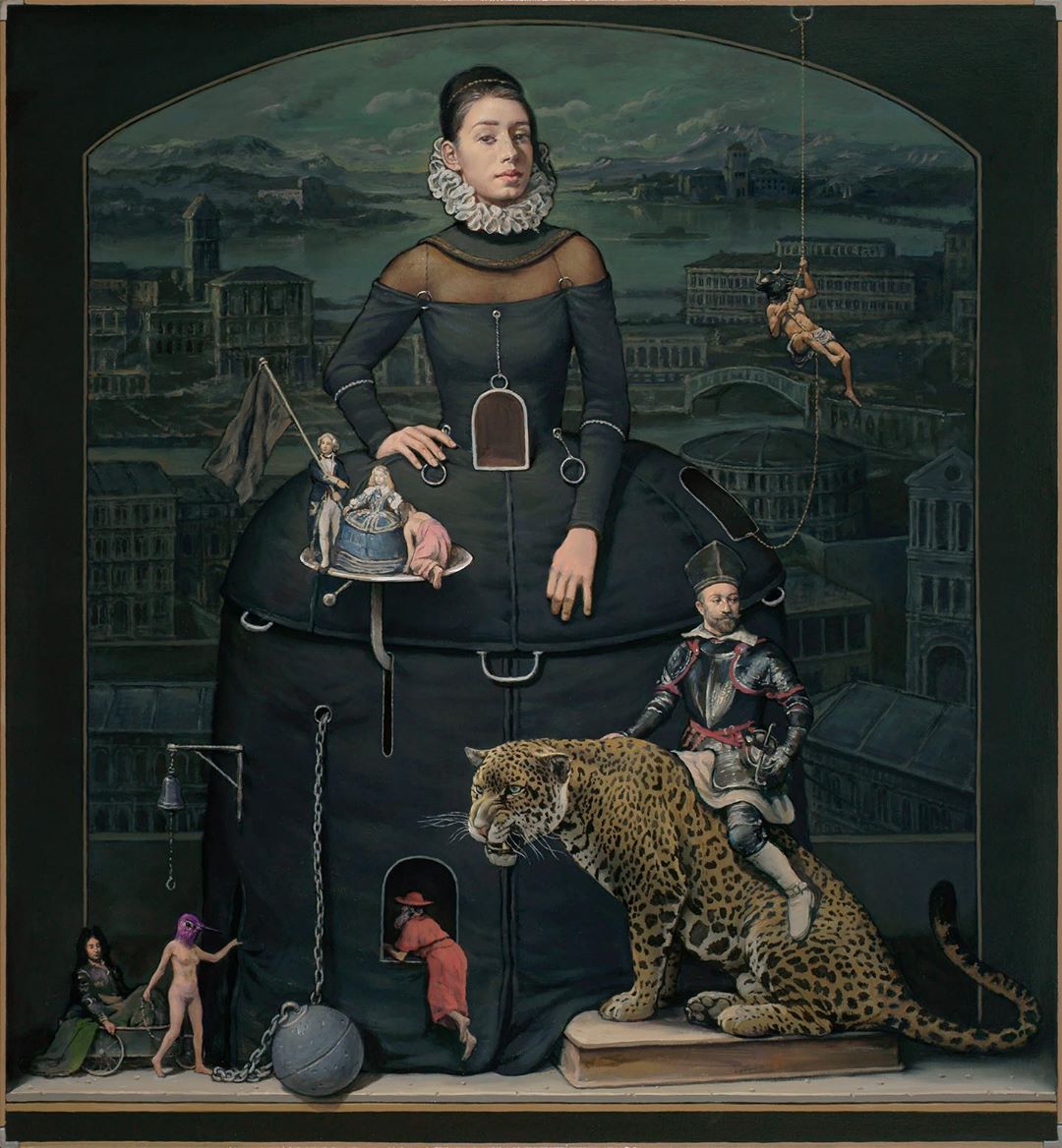
Christian Edler’s self-portraits hint at an inner conflict brewing within the artist’s psyche. Edler uses his own likeness for surrealist visual experiments, painting himself with various mutations that explore the battles we have with ourselves. In one work, Edler’s face multiplies over and over, creating a web of mouths, fingers, and eye sockets that seems bent on destroying itself. In another piece, he collapses face down in resignation, his face cracking like a ceramic vase. Other works are more hopeful, however, like the one where he cuts himself loose from puppet strings and heads towards a new destiny.








 Bright flora bursts in
Bright flora bursts in  There is seemingly no element too exotic to inhabit an oil painting by Alan MacDonald, whose works traverse cultures and histories to present something always elegant in execution. At the base of MacDonald’s work seems to be a need for adventure, exploring inspiration and varying perspectives in each work.
There is seemingly no element too exotic to inhabit an oil painting by Alan MacDonald, whose works traverse cultures and histories to present something always elegant in execution. At the base of MacDonald’s work seems to be a need for adventure, exploring inspiration and varying perspectives in each work. Interpretations of Lyon based
Interpretations of Lyon based 